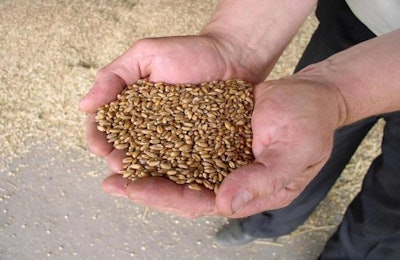
We may see an end to the recent trend of increased global use of wheat in livestock and poultry feeds, according to a new report from Rabobank.
Looking ahead, nutritionists will need to be open to explore different options for feed grains in their ration formulations, writes Stefan Vogel, the organization’s head of global agro commodity markets, in a report titled, “Global Wheat Demand: Feeding the World by Milling and Feeding.”
Over the past 15 years, the total use of wheat has increased by around 25 percent to an estimated 736 million metric tons (mmt) for the current season, 2016-17.
Around 80 percent of this season’s global wheat harvest – 590 mmt – looks likely to be destined for the market segment described as “food, seed and industrial.” Food uses account for 68 percent of total production, and 3 to 5 percent goes into seed, industrial and other uses.
Use of wheat for livestock feeding has increased from 112 mmt in 2001-02 to a forecast 147 mmt in 2016-17. This is around 20 percent of total global production. However, this general upward trend covers wide variation between years as the global harvest has been affected by factors such as favorable conditions in 2011 followed by drought in Russia the next season.
Feed producers must stay flexible
With the food sector taking a greater share of the global wheat harvest when supplies are short, feed companies will need to be flexible to respond to future changes in the supply and demand for grains, according to Vogel. Composition of feeds will need to be led by least-cost formulations using a wide variety of ingredients, rather than fixed percentages of a limited range of raw materials.
Looking ahead, he expects competition from corn and other cereal grains to put a brake on the increased use of wheat in feeds.
There will be greater opportunities for global trading of grains, providing they can be transported cost-effectively, according to the Rabobank specialist.
Regional variation in wheat inclusion in feeds
The European Union is the region consistently using the most wheat for animal feeds, with an uptake of 50-60 mmt since 2001-02, or around 40 percent of the total, according to the Rabobank report.
Asia has doubled its volume of wheat for feed over the study period from 20 mmt in 2001-02 to a forecast 40 mmt for the current season, or 27 percent of the total. As for the rest, former Soviet Union countries account for 20 percent, and North America for 7 percent.

















